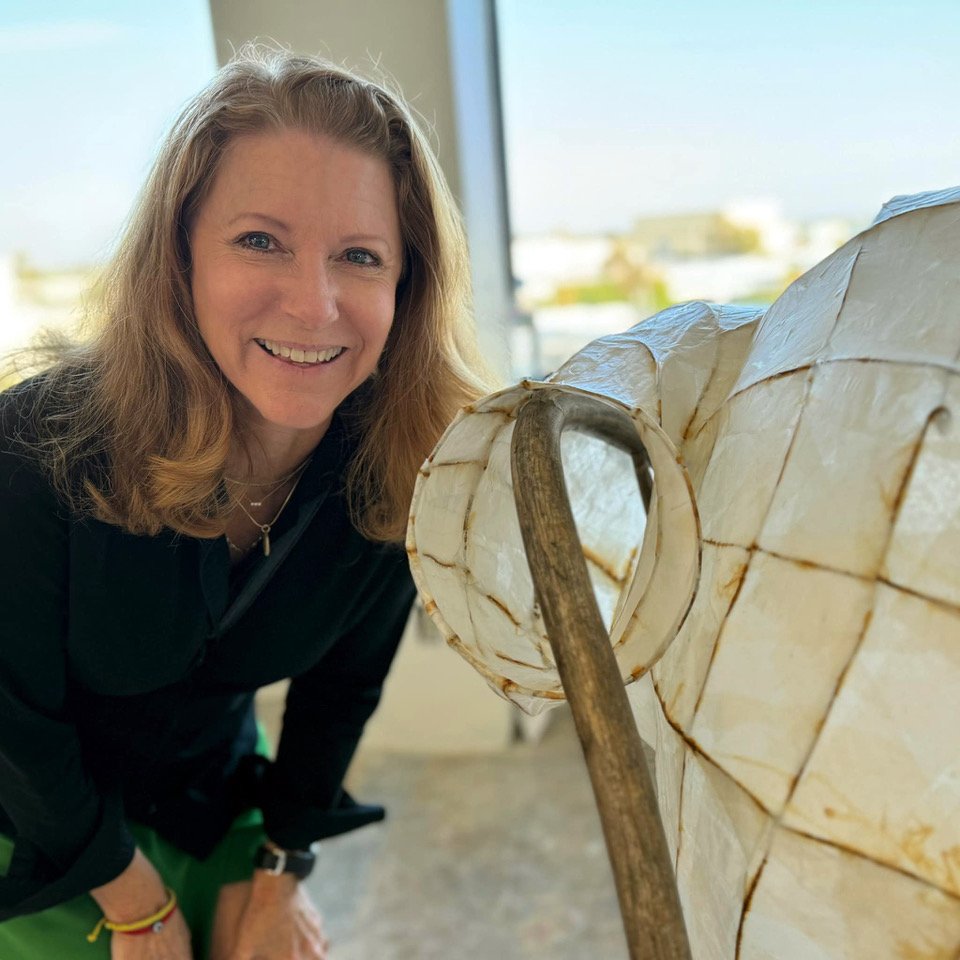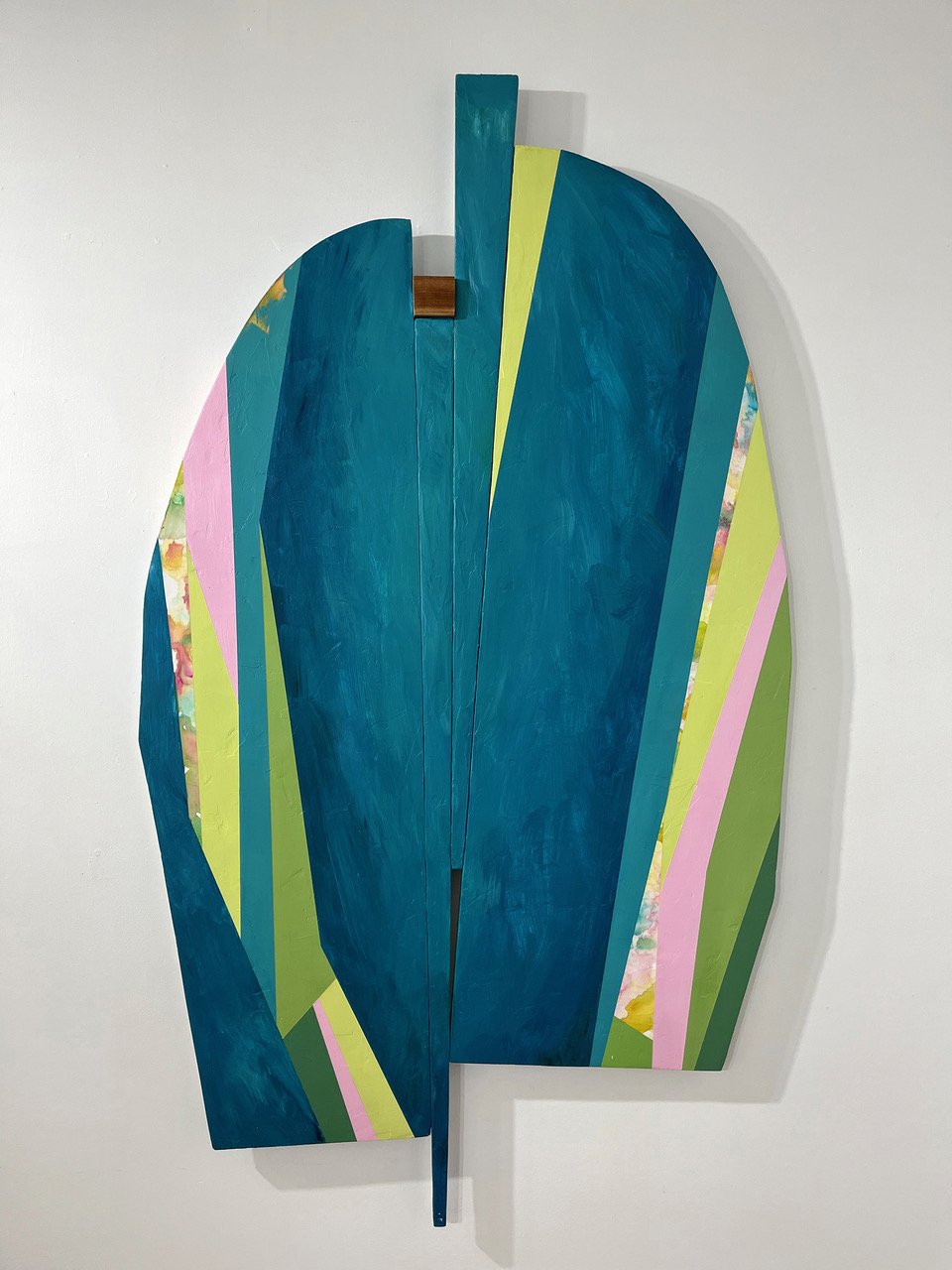Valerie Wilcox
Redondo Beach, Los Angeles, CA
Website
www.valeriewilcox.com
Social Media
Instagram
Facebook
Youtube
LinkIn
How would you describe your work?
Hope, second chances and authenticity are the values that I strive to incorporate into my artistic practice. The intent for my work is to provide a sense of optimism in society’s ability to reinvent itself.
I take common materials, consumables, and the flawed and imperfect remnants from our built environment and create these hybrid works that celebrate the imperfect and unconventional.
Architecture and design are important structural influences in my work, while the movement and life force of the body provides an organic counterpoint. My work often references the body moving amongst our built environment as we constantly maneuver around these structures, our body and mind constantly adapting and modifying to a new framework, system or barrier. I think about the space we inhabit as an abstract.
Taking from my background of clothing design, packaging design and a great interest in design and architecture there has always been a consistent thread of the three-dimensional in my work, whether real or many times surreal. In my art practice, I’ve found a consistent theme that allows me to combine all these skills. I call this body of work, “Constructs,” and it allows me the freedom to experiment with an endless variety of materials and across dimensions. This body includes 3D wall sculptures, freestanding sculpture and installation work.
What inspires you?
Both the constructed and natural environment in all its forms. I’m inspired and challenged by the salvaged materials and remnants I’ve gathered and have around me. I’m influenced by the raw textures and colors of construction materials. I’m also very interested in architectural, interior and landscape design because they deal with the spaces that we occupy.
Traveling around the world seeing new places, textiles, structures and colors is a big motivator for me.
And, as an artist, how can you not be inspired by the artwork we see everywhere, as well as current and past masters.
Can you speak about your process?
My practice is very process oriented and materials-based. I work with a lot of found salvaged materials and remnants from previous artworks. I enjoy discovering and working with abstract shapes, textiles, mark-making and painting. I generally work with papier-mâché, plaster, acrylics, salvaged wood, foam board and textiles like fabric and carpet. My job is to problem solve each piece and figure out how the pieces go together. I encourage the odd combinations, quirky shapes and color explorations to happen and create the unexpected.
How did you become interested in art?
I come from a very creative family and I can’t remember not drawing and painting as a kid. My parents were both very artistic and encouraged me to follow my creativity wherever it took me. I was drawing dinosaurs in kindergarten, I never wanted to follow what others were doing, I had to be original. At first, from the age of about 11 years old I was designing and making my own (and friends) clothing with the goal of becoming a fashion designer. However, long story, I ended up getting my BFA in Graphic Design and I worked in that profession for over 25 years. I worked for design firms and then had my own firm for about 15 years. I’ve done everything from annual reports to packaging, branding, signage and all the marketing collateral/advertising materials that comes with it. I coincidently (or not) ended up gravitating towards branding and packaging design for the beauty industry, including bottle and componentry design. The idea for my wall sculptures came from clothing patterns and packaging templates that assemble into 3D clothing/carton designs. I’ve been painting most of my life, so that was important to incorporate into this work as well.
Do you have any favorite artists, movies, books, or quotes?
Artists: I love Phyllida Barlow- the scale of her work, use of common materials and loose but structured works are amazing. We lost a real good one. Tuttle has been an early influence because of his irreverence to the materials, how he sees things and his economy of means.
Helen Lundeberg’s wonderful color sense and architectural sensibilities. Richard Serra‘s large elegant sculptures and Eva Hesse, Liz Larner, Coleen Sterritt and Kishio Suga among others for their sculptural inventiveness and exploration.
What advice do you have for younger artists?
See lots of art, go to gallery and museum shows consistently. This gives you a good sense of what’s been done, what’s being done currently, as well as where your work fits into that.
If something doesn’t feel right in your work, don’t be afraid to modify or even start over if needed. Never settle. You’ll know it’s not working when you get that nagging feeling. Set it aside for a time and revisit it later.
Any more thoughts about art, creativity, or anything else you would like to share?
I have this quote taped up in my studio and find that it encourages me to be brave:
“If you knew you were going in there to knock out great paintings, it wouldn’t be any fun. This is what makes it interesting to be an artist. It’s the idea of finding yourself and knowing you can be 100% wrong with each decision, each brushstroke. The fun is wandering around in the fog, with a cliff nearby.” - Charles Garabedian
What’s happening for you currently?
I have a solo show called, “Hope Reconfigured” at the José Drudis-Biada gallery on the Mount Saint Mary’s University campus. Show runs through March 29, 2025.























